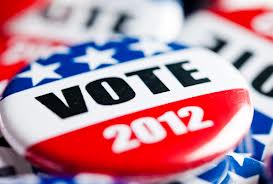Initial accounts of last Tuesday’s presidential election contemplated what seemed to be a significant decline in turnout from 2008. Those reports may have been premature, at least in part. Some states, particularly those where much balloting is conducted by mail, have yet to finish counting their returns. It is likely that there are several million votes left to be counted in California, for example. Nonetheless, it seems probable that we will see something of a split in the number of people who turned out to vote in 2012.
In many of the states where the campaigns focused most of their attention, more people voted than in 2008. Turnout is likely to have declined in many non-battleground states, however.
In the table below, I’ve compared the number of people who voted in the 2008 presidential race against the number of ballots counted in the 2012 election as of early Monday morning. States highlighted in yellow are battleground states, which I’ve defined as those in which both President Obama’s and Mitt Romney’s campaigns spent a material amount on advertising.

Based on the ballots counted so far, more people voted than in 2008 in Nevada, North Carolina, Wisconsin, Colorado, Iowa, Florida and Virginia, while turnout in New Hampshire was essentially unchanged from 2008.
Among the battleground states, only Ohio and Pennsylvania report a material decline in turnout.
However, Ohio has yet to finish counting its provisional ballots, along with some mail ballots that were postmarked before Election Day but had yet to reach their precincts. That could add about 325,000 ballots to the state’s total, bringing turnout there close to its 2008 levels.
In Pennsylvania, there may be more of a true decline, although about two dozen precincts in Philadelphia had yet to report their results as of Monday morning.
Even without these votes, turnout in the battleground states over all was generally near its 2008 levels. In contrast, it is down by about 9 percent in the other 40 states, based on ballots counted so far. Some of the shortfall will be made up in the coming days. In California, where most balloting is conducted by mail and where it can take weeks to certify the vote, about 3.4 million fewer votes than in 2008 have been reported so far.
As the rest of the votes come in from California, Mr. Obama could add about 700,000 more votes in his margin against Mr. Romney, assuming that the remaining votes are divided between the candidates in about the same proportions as the ones counted so far.
Those votes could be enough to push Mr. Obama’s margin of victory in the national popular vote, reported at 2.7 percent as of Monday morning, to slightly higher than 3 percent.
Alaska, which is always slow to count its ballots because of the difficulties of gathering reports from far-flung rural areas, will add more votes in the coming days; only about 63 percent of its precincts have reported.
Hundreds of thousands of votes in Arizona remain uncounted, mostly in urban parts of Phoenix and Tucson. Ballot counts in Washington and Oregon are likely to increase as further mail ballots are tabulated.
New York and New Jersey show sharp declines in turnout from 2008. Some of this may reflect the effects of Hurricane Sandy — although New York is another state that can be slow to count all of its votes. New York City itself reports about 2.1 million ballots counted so far, compared with closer to 2.4 million in 2008. (About 20,000 fewer ballots are accounted for in Staten Island than in 2008, a 15 percent decline in turnout. Mr. Obama, who lost the borough in 2008, leads Mr. Romney slightly among the votes counted there so far.)
Still, it is likely that at least some of the split in turnout patterns will remain intact once all ballots are in.
Competitive states generally turn out voters at slightly higher rates than noncompetitive ones. But as the list of swing states narrows, and as the campaigns become increasingly effective at aiming their resources toward them, the discrepancies may widen in the coming years.
Americans outside the battleground states, knowing that their votes will make little difference in the Electoral College, may become less likely to vote at all.

